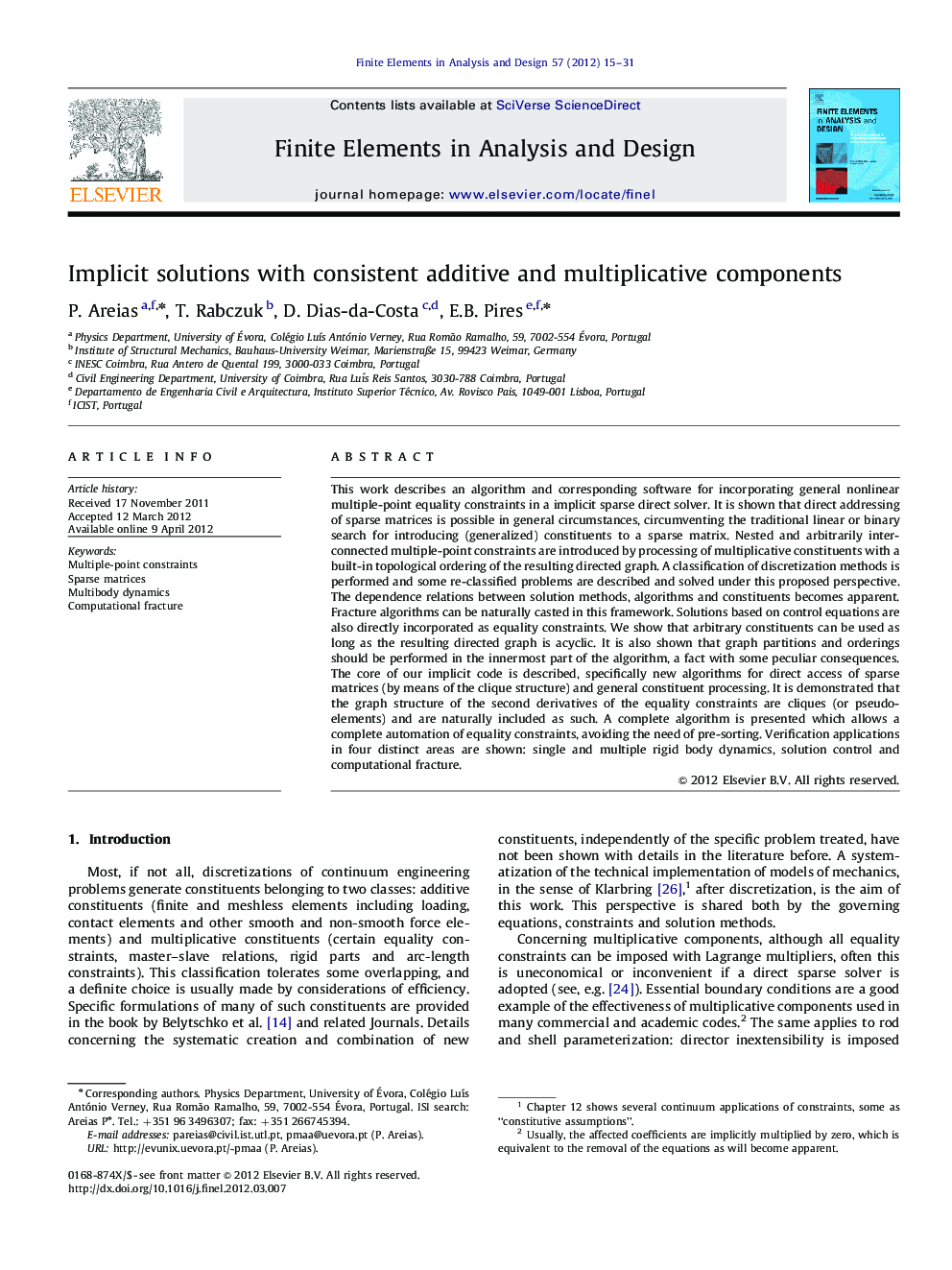| Article ID | Journal | Published Year | Pages | File Type |
|---|---|---|---|---|
| 514548 | Finite Elements in Analysis and Design | 2012 | 17 Pages |
This work describes an algorithm and corresponding software for incorporating general nonlinear multiple-point equality constraints in a implicit sparse direct solver. It is shown that direct addressing of sparse matrices is possible in general circumstances, circumventing the traditional linear or binary search for introducing (generalized) constituents to a sparse matrix. Nested and arbitrarily interconnected multiple-point constraints are introduced by processing of multiplicative constituents with a built-in topological ordering of the resulting directed graph. A classification of discretization methods is performed and some re-classified problems are described and solved under this proposed perspective. The dependence relations between solution methods, algorithms and constituents becomes apparent. Fracture algorithms can be naturally casted in this framework. Solutions based on control equations are also directly incorporated as equality constraints. We show that arbitrary constituents can be used as long as the resulting directed graph is acyclic. It is also shown that graph partitions and orderings should be performed in the innermost part of the algorithm, a fact with some peculiar consequences. The core of our implicit code is described, specifically new algorithms for direct access of sparse matrices (by means of the clique structure) and general constituent processing. It is demonstrated that the graph structure of the second derivatives of the equality constraints are cliques (or pseudo-elements) and are naturally included as such. A complete algorithm is presented which allows a complete automation of equality constraints, avoiding the need of pre-sorting. Verification applications in four distinct areas are shown: single and multiple rigid body dynamics, solution control and computational fracture.
► Systematic treatment of multiple-point constraints by topologically ordering nested constraints. ► Direct access of sparse matrices by means of cliques. ► Decomposition of all discretization methods by classifying components as additive (elements, loads,…) or multiplicative (essential boundary conditions, equality constraints,…). ► Applications to multibody dynamics, computational fracture and element construction.
